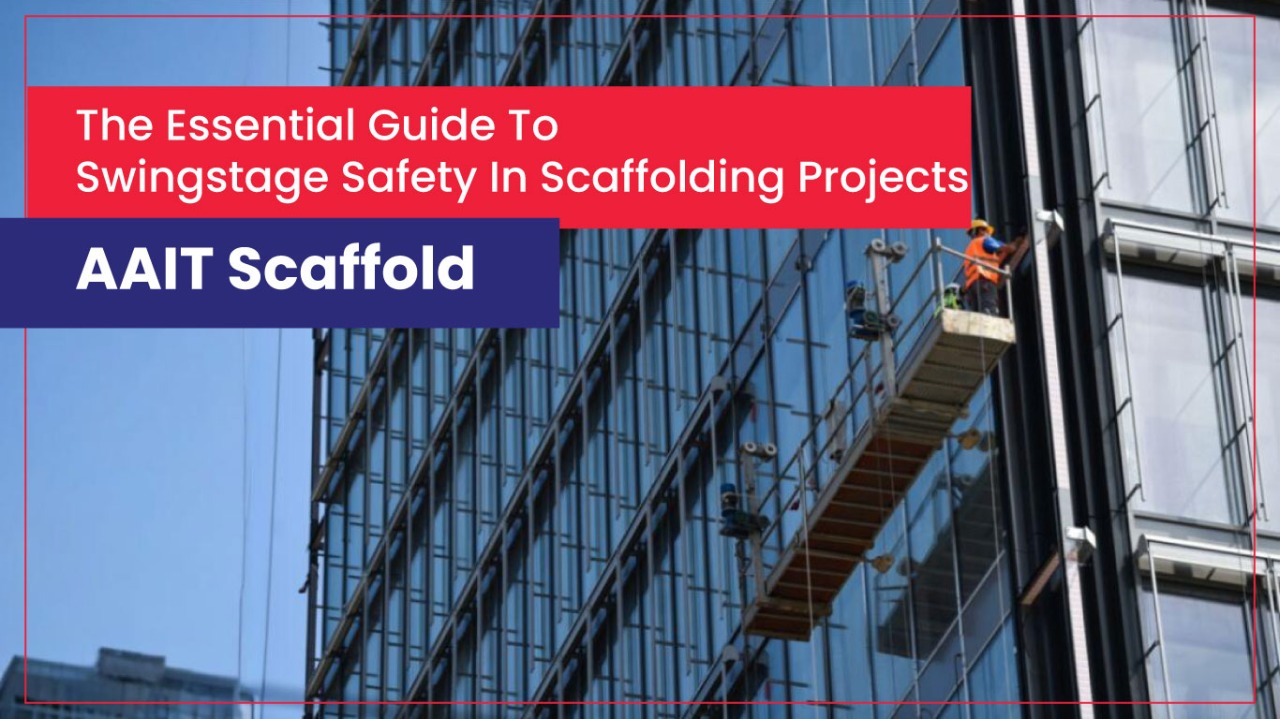
In the modern era, scaffolding has always been observed at construction sites. As soon as scaffolds are erected, workers can carry out the tasks effectively. They can also ascend or descend the scaffold for diverse construction tasks. But, for high-rise projects, swing stages are ideal. So, in this article, let’s check more about swingstage safety in scaffolding.
What are Swing Stages Scaffolding?
When you observe a swing stage, it’s usually used for working at heights. Such a scaffold is used for tall building maintenance. Workers use this to clean windows, paint tall buildings, and for repairs. Most of the time, it comprises a platform which is adjustable along the building’s face. Thus, the suspended scaffold offers a stable platform for accessing different heights.
What are the diverse components of a swing stage scaffolding?
Usually, a swing stage consists of different components. Let’s check these one after the other.
Platform – This is known as a working surface which workers use for tasks.
Guardrails – These parts are securely fastened around the platform. They usually prevent the workers from falling off suddenly.
Brakes & Motors – These components regulate the platform’s motion.
Cables – These are generally used to support the platform. Once the cables hold the platform, they ensure safety to the workers.
Apart from the above components, numerous safety devices are also used. These include backup ropes, harnesses and fall arrest systems.
When do workers use a construction swing stage?
A swing stage is used when workers have to access hard to reach areas. These can either be windows or exterior surfaces. Once the workers use the movable platform, they can paint walls and wash windows. On the other hand, swing stages are set up when it’s impossible to erect scaffolding. However, these must be deployed only with swingstage safety protocols in scaffolding.
How to ensure safety with swing stage scaffolding?
When workers execute a construction project, it’s important to maintain safety. Attention to every detail has to be paid while using swing stages.
Platform Design
Before using a swing stage platform, ensure that it can support the intended load. The platform’s surface must also not have any obstructions. In case the surface is slippery, then it will be tough to maintain grip. Above all, the platform must be secured using guardrails. These will prevent objects from falling suddenly.
Fall Protection Systems
Robust fall protection systems are required for swing stages. Apart from safety harnesses, the systems must include anchor points and lanyards. In addition, the workers must be firmly secured to the swing stages. Checking the fall protection gear will also ensure swingstage safety in scaffolding.
Weather Considerations
Outdoor climatic conditions can impact the safety of swing stage operations. So, before commencing with tasks, it’s important to evaluate the weather forecasts. If the climate becomes worse, then the workers have to stop working immediately.
Regular Inspections
To ensure utmost safety, it is necessary to inspect the swing stage equipment regularly. At those instances, the workers have to check the ropes, and anchors. They must further ensure that these are in good condition. In case there is any wear out, then the issue has to be addressed immediately. The inspections should also be documented to identify recurring issues.
Training & Competency
To use the swing stage safely, proper training has to be given. When the workers are led through different modules, they must know more about equipment use. In addition, they must also know more about emergency procedures. Later, evaluations also have to be carried out to ensure safe use.
Emergency Systems
If workers face an emergency, then a response system must be in place. Such a kind of system must have first aid kits, and a clear evacuation plan. Communication tools must also be included in the system. Periodically conducting drills will also ensure readiness for emergencies.
What Practices to follow for use of swing staging scaffolding?
Workers follow numerous best practices for the use of the swing stage. Let’s check the practices to ensure swingstage safety in scaffolding.
Outline a Safety plan
Using the swing stage always needs a safety plan. Such a plan must cover the steps for setup and use. Besides, it should also include more about the fall protection systems.
Communication is Key
Keeping communication clear is important while working. Workers can communicate about the activity using hands or radio signals. Such types of signals can also make the workers alert about certain hazards.
Proper Load Management
It’s always essential to understand the working capacity limit. In case the limit doesn’t exceed, then it can prevent accidents. Proper distribution of loads is yet another aspect to consider. Load management also involves the distribution of counterweights.
Regular Training Updates
Regular training sessions can impart knowledge about safety protocols. Moreover, the safety standards are also maintained through regular updates. Such initiatives will later make the workers capable of dealing with diverse situations.
Record Keeping
As time passes by, it’s also important to maintain detailed records. These may be related to the swing stage’s maintenance and inspections. Once the data is documented, workers can check for wear and tear. Thus, record keeping helps to enhance reliability of swing stages.
Conclusion
Finally, swing stages have transformed the way work is carried out. These are quite efficient and safe to use even when they are suspended. But, certain safety protocols have to be followed for swingstage safety in scaffolding. In case workers fail to follow the protocols, then it can lead to adverse consequences. Hence, to know the potential of swing stages, you must be aware of its features.
Consider contacting AAIT Scaffolds if you have your team to execute a construction project. While we supply diverse components, we assure you with reliability and quality.












 Download
Download
Comments are closed